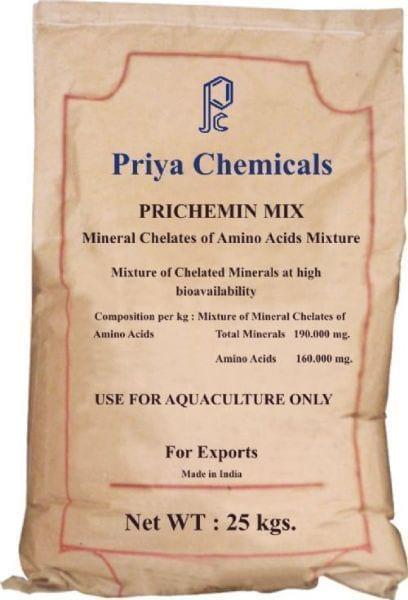Explore all the information on
Aquaculture health
Welcome to the page about Aquaculture health of Engormix; a source of knowledge on Aquaculture health.
The mystery of the source of a parasite threatening to cripple the Sydney rock oyster industry may finally have been cracked. In 2004 an outbreak of QX disease in the Hawkesbury River killed oysters worth $5 million. Although harmless to humans, QX, found from south-eastern Queensland to the Georges River, has killed up to 90 per cent of infected oysters. Scientists have known since 1976 that QX involves a parasite. However, it cannot migrate directly from one oyster to another...
Comments : 0
Recommendations: 0
Norwegian aquaculture company Cermaq has confirmed that salmon at one of its Chilean fish farms has tested positive for infectious salmon anemia (ISA). In a statement released last week, the company said that a limited number of cages at one of the Mainstream sites have been affected. Up to now, the level of mortality has been low, and the company said that the cost of dealing with the outbreak is not expected to exceed USD 500k. Last month Chile’s National Fishing Service...
Comments : 0
Recommendations: 0


PRICHEMIN MIX
Priya's PRICHEMIN MIX is a mineral supplement for aquaculture. It consists of a mix of mineral chelats from aminoacids
Suggested link
Aquaculture is the fastest growing food production sector and has greatly developed during the last 20 years. In marine fish culture, this development has been only possible through the intensification of production systems that have increased culture densities and fish handling, together with increasing stress conditions and pathogen susceptibility (Winton, 2001). Infectious diseases can markedly reduce economic profit by increasing sanitation costs and fish mortality and reducing...
Comments : 0
Recommendations: 0
A new fact sheet by scientists from the U.S. Geological Survey's Western Fisheries Research Center describes the best methods for resource managers and others to detect and confirm a new and virulent strain of viral hemorrhagic septicemia (VHS) virus in fish, including popular game fish and bait fish. The recent spread of this sometimes devastating new strain -- called VHSV Genotype IVb -- has resulted in very large die-offs of thousands of fish in four of the five Great Lakes since...
Comments : 0
Recommendations: 0


PRICHEMIN MIX
Priya's PRICHEMIN MIX is a mineral supplement for aquaculture. It consists of a mix of mineral chelats from aminoacids
Suggested link
The Chilean Government has acknowledged for the first time that sea lice – parasitic crustaceans that affect both wild and farmed fish – are causing serious problems for the country’s lucrative farmed salmon industry. Also known as Caligus, sea lice attach themselves to the bodies of fish, causing infection-prone lesions that leave the host fish vulnerable to a host of potentially fatal illnesses. Though they also affect wild fish, sea lice are particularly attracted to fish farms, which...
Comments : 0
Recommendations: 0
The success of intensive aquaculture has been the direct result of improved genetics, nutrition and management as well as maximising disease control. A commercial production system can only be economically viable if these factors are optimised. Key zootechnical parameters to evaluate the efficacy of a system include growth rate, feed conversion ratio (FCR) and mortality, which are influenced primarily by the quality of feed and feed intake. For many years water quality has been the...
Comments : 0
Recommendations: 0


PRICHEMIN MIX
Priya's PRICHEMIN MIX is a mineral supplement for aquaculture. It consists of a mix of mineral chelats from aminoacids
Suggested link
Oreochromis Niloticus fish (O. niloticus) were divided into 9 equal experimental groups included: group (1) as a control, group (2) exposed to phenol (150 μg/l water) for 10 days, group (3) exposed to phenol (200 μg/l water) for 10 days, group (4) exposed to hypoxia for 3 days, group (5) exposed to copper sulphate in water (5 ppm) for 10 days, group (6) exposed to acidic water (pH 5) for 3 days, group (7) exposed to ammonia-N (0.2 ppm) in water for 3 days, group (8) exposed to...
Comments : 0
Recommendations: 0
The farming of marine shrimp is practiced worldwide and is estimated to provide over 25% of total shrimp production. In Asia, shrimp production has been predominantly focused on the Black Tiger prawn, Penaeus monodon. Successful shrimp production requires the use of effective disease prevention strategies and a good understanding of the basic immune functions of shrimp is important to understand how these can be implemented effectively. Both the cellular and humoral immune systems of the...
Comments : 0
Recommendations: 0


PRICHEMIN MIX
Priya's PRICHEMIN MIX is a mineral supplement for aquaculture. It consists of a mix of mineral chelats from aminoacids
Suggested link
Introduction The United Nations (UN) estimates that by 2037 the world’s population will have exceeded 10 billion. This rapid growth in humankind will bring with it severe difficulties, not only in terms of providing shelter, education, and health care, but also in maintaining current levels of protein nutrition. The Food and Agricultural Organization (FAO) of the UN acknowledge that global fishery output must be increased by at least 50% to offset projected shortfalls in...
Comments : 0
Recommendations: 0
Louisiana Fish Pond Springtime Problems Springtime disease losses in fish ponds are common throughout the Southeast, especially in Louisiana. Low temperatures during winter force fish into a state of slow motion in which they eat little and their immune systems respond slowly. When temperatures begin to rise in the spring, disease-causing organisms already naturally present in a pond can get the upper hand on fish that are in a weakened state. Stress caused by abrupt temperature...
Comments : 0
Recommendations: 0


